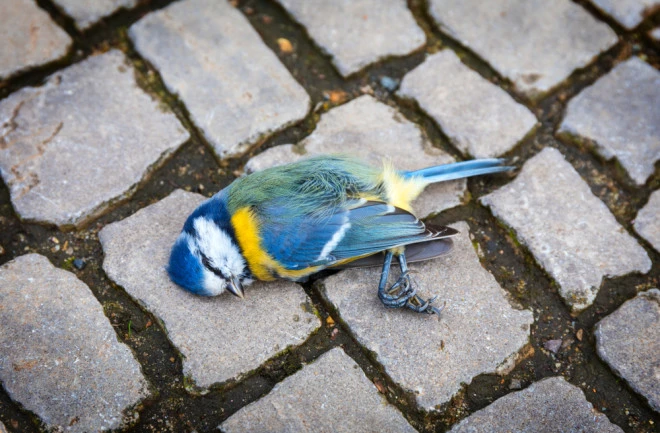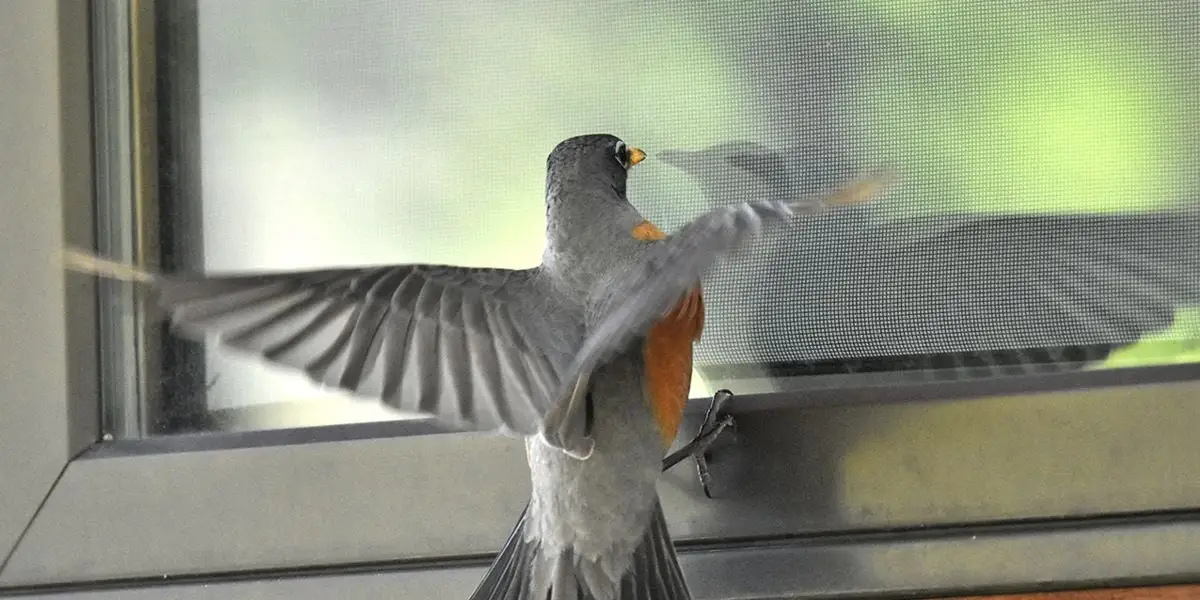Taking proactive measures to protect birds from colliding with windows is essential. By implementing strategies such as installing window decals or films, using screens or netting, and creating visual barriers like plants or hanging objects, we can significantly reduce the risks for our feathered friends.
If a bird does hit your window, you must check for injuries and provide first aid if needed. Contacting local resources and organizations dedicated to bird conservation and protection can also help ensure injured birds receive the necessary care. By working together to raise awareness and implement practical solutions, we can create safer environments for birds and humans.
The dangers and consequences of bird-window collisions

Bird-window collisions pose severe dangers to both birds and humans. The impact of a bird hitting a window can result in fatal injuries for the bird, leading to unnecessary suffering and potential death. For homeowners, this can also lead to property damage or the need for costly repairs.
In addition to physical harm, these collisions can also have ecological consequences. Birds play a crucial role in maintaining biodiversity and ecosystems, so losing them due to window strikes can disrupt the delicate balance of nature. This could ultimately impact other wildlife species and even plant life.
Frequent bird-window collisions may indicate underlying issues such as light pollution or improper landscaping that attract birds towards windows. By understanding these dangers and consequences, we can take proactive steps to prevent such incidents from occurring in the future.
Understanding why birds hit windows
Birds hitting windows can be a puzzling phenomenon for many people. Birds collide with windows due to the reflection of trees and sky, making it appear like an open space on the other side. During certain times of the year, like the breeding season, territorial disputes or mating behaviours can cause birds to become more agitated and prone to collisions.
The speed at which birds fly also plays a role in window strikes, as they may not have enough time to react when they see their own reflection or objects inside the building. Another factor is that some bird species do not recognize glass as a solid barrier and perceive it as an extension of their surroundings.

Ways to prevent bird strikes on windows:
They implement several effective strategies. One method to prevent bird strikes on window solar is installing window decals or films that create a visual barrier for birds, making the glass more visible and reducing the chances of collisions.
Another option is using screens or netting outside of your windows. These barriers help birds see the glass and provide additional protection against impacts.
Creating visual barriers near your windows, such as hanging objects like wind chimes or placing potted plants in front of them, can also help deter birds from flying into the glass. This simple yet effective approach adds extra safety for our feathered friends without compromising your view.
Installing window decals or films
Want to protect birds from hitting your windows? Installing window decals or films can make the glass more visible to our feathered friends, reducing the chances of collisions.
Decals come in various designs that can add a touch of style to your windows while serving a crucial purpose. Films are another great option, providing a protective layer that helps block UV rays and reduce glare inside your home.
By placing these visual cues on the glass surface, you create a barrier that alerts birds to the presence of an obstacle. This simple yet effective solution can significantly prevent bird strikes and keep our avian buddies safe.
Consider selecting decals or films with patterns that break up reflections and mimic obstacles like branches or leaves. This way, you enhance the aesthetic appeal of your windows and contribute to bird conservation efforts.
Using screens or netting
Using screens or netting is a practical way to prevent bird strikes on windows. These physical barriers create a visible obstacle that birds can see and avoid, reducing the risk of collisions.
Fine mesh or netting screens can be easily installed outside windows without obstructing your view. They are an effective solution for deterring birds from flying into reflective surfaces.
Not only do screens and netting protect birds, but they also add an extra layer of insulation to your windows, helping with energy efficiency in your home. These barriers can be customized to match your existing window frames, blending seamlessly into your exterior design.
Creating visual barriers like plants or hanging objects
Creating visual barriers is an effective way to prevent birds from hitting your windows. Plants or hanging objects near the window can help break up reflections and make the glass more visible to birds in flight.
Consider planting shrubs, bushes, or trees outside your window to create a natural barrier that can deter birds from flying into the glass. The movement of leaves and branches can also alert birds to the presence of a solid surface.
Hanging objects like wind chimes, mobiles, or even strips of shiny material can help disrupt reflections and make it easier for birds to see the window as an obstacle in their path. These visual cues serve as warning signals for our feathered friends.
If a bird hits your window, do the following:
If a bird hits your window, it can be distressing. The first thing to do is approach the window carefully to check the bird’s condition. Look for any signs of injury or distress. If the bird appears stunned but uninjured, you can gently pick it up and move it to a safer location away from windows.
Providing some time and space for the bird to recover from the shock is essential. You can place it in a quiet, sheltered area like a cardboard box with air holes while keeping an eye on it. Avoid handling the bird too much and minimize any stress or disturbance.
If you notice any visible injuries or the bird doesn’t seem to recover after some time, consider contacting local wildlife rehabilitators or organizations dedicated to avian conservation for further assistance.Injured birds can be treated by them because they have the expertise and resources to do so.
Checking for injuries and providing first aid if needed
When a bird hits your window, it can be distressing to witness. If you find a bird that has collided with your window, approach it calmly and carefully. Check for any visible injuries, such as bleeding or broken wings.
If the bird appears injured, gently place it in a well-ventilated box lined with soft towels. Ensure the box is kept away from noise and disturbances to minimize stress on the bird. Provide fresh water, but avoid feeding the bird unless a wildlife expert advises.
Contact local wildlife rehabilitation centres or animal control services for guidance on what to do next. They may instruct you to bring the bird in for professional care or provide further advice on how to help the bird recover.
Contacting local
If a bird hits your window, it’s essential to act swiftly. Check the bird for signs of injury and provide first aid if needed. Remember, birds are delicate creatures, so handle them with care.
Sometimes, contacting local wildlife rehabilitation centres or organizations specializing in bird rescue may be necessary. These experts have the knowledge and resources to properly care for injured birds.
When reaching out for help, be prepared to provide details about the bird’s condition and location. This information will assist professionals in determining the best course of action for the bird’s well-being.
By acting promptly and involving local wildlife authorities when necessary, you can save a precious life and support conservation efforts in your community.
Resources and Organizations for Bird Conservation and Protection
When it comes to bird conservation and protection, various resources and organizations are dedicated to making a difference. These groups work tirelessly to raise awareness about preserving bird populations and habitats. They often conduct research, advocate for policy changes, and engage in community outreach initiatives.
One notable organization is the Audubon Society, which is known for its efforts in bird education and habitat preservation. Another essential resource is the American Bird Conservancy, which focuses on preventing bird collisions with buildings through advocacy and practical solutions.
Local wildlife rehabilitation centres also play a crucial role in caring for injured birds that may have collided with windows or other structures. By supporting these organizations through volunteering or donations, we can all contribute to protecting our feathered friends for generations to come.




